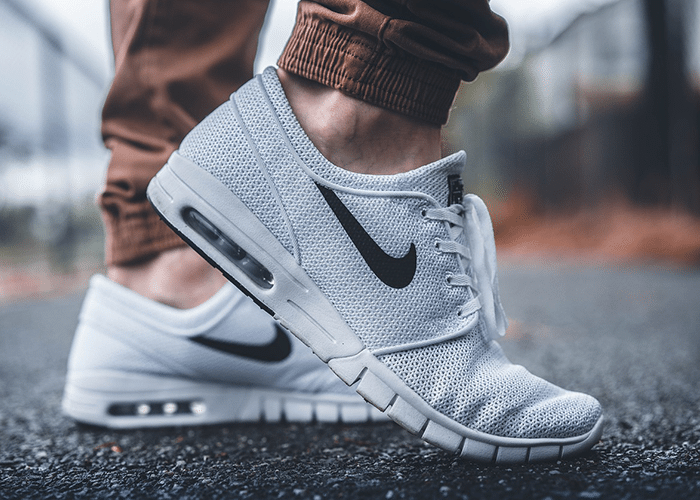“Back To The Future” foresaw an era of video phone calls and personal drones. Now another prediction from the movie series could soon become part of daily life: smart clothing that can self-adjust to its wearer’s needs.
Companies ranging from Nike (NKE) and Under Armour (UAA) to Google parent Alphabet (GOOGL) and Microsoft (MSFT) are developing smart clothing technology. As apparel makers hunt for tech know-how and tech nerds look for some fashion sense, the clothing trend is stitching together unlikely partners — and could reshape the apparel industry.
A partnership between Alphabet’s Google and Levi Strauss could be a sign of things to come. They have brought to market the $350 Commuter X, a denim jacket that lets the user control a phone through the use of gestures alone.
“The first time you saw Google and Levi’s you probably said to yourself, ‘How did this happen?’ ” he said in an interview. “But over time it came to make sense and was a natural fit.”
What Is Smart Clothing?
In addition to self-adjusting clothes, smart clothing includes internet-connected clothing. Juniper Research estimated last month that connected clothing is the fastest-growing segment of the wearable technology sector.
For now, smartwatches like the Apple (AAPL) watch and activity trackers like the Fitbit (FIT) dominate the overall wearables market. Juniper sees shipments of those devices hitting 137 million this year, with compound annual growth over the next two years projected at 31% for smartwatches and 6% for activity trackers.
Meanwhile, Juniper sees 102% compound annual growth in connected clothing, estimating it will be a $1 billion industry in 2020 with 7 million shipments. Just two years later, they will more than quadruple to 30 million shipments.
Smart clothes also differ from today’s wearables in that they will have longer ranges and more accuracy. They also won’t be limited to a small touch point at the wrist.
Making New Wearables Practical
Developers are trying to keep smart clothes practical too. Google and Levi’s Commuter X jacket is machine washable and can go in a tumble dryer. But a “snap tag” that contains tiny electronics and a battery must first come off.
Google is developing a system that weaves technology into the very fabric of clothing as part of its Project Jacquard. Project leader Ivan Poupyrev says Google isn’t planning to make its own apparel and instead aims to “empower existing apparel makers.”
Loup Ventures managing partner Doug Clinton believes successful synergies between tech and apparel companies will be a key to success. That will help the smart clothes market be worth several billion dollars in the next few years, he estimates.
“I think we are going to see a lot of partnerships like that, and that’s what is going to push the market forward,” he said. “This combination of design and technology is a really important part of the story.”
Smart Clothing Technology
Perhaps the most famous example of self-adjusting smart clothing on the market is Nike’s HyperAdapt shoes, which boast “Back To The Future”-inspired self-tying laces. Stars such as tennis champion Serena Williams and soccer icon Cristiano Ronaldo promoted the first edition. Initially priced at $720, the highly coveted shoes are being sold on the secondhand market for more than $2,000 per pair.
A second version is in the works that will offer upgraded technology at more accessible prices. Nike’s vice president for design and special projects, Tinker Hatfield, says the HyperAdapt 2.0 will be a performance basketball sneaker.
“We don’t really know when it’s going to hit the market or be in the NBA, but it will be there for sure,” he said last September.
Microsoft has also explored the technological applications. Researchers previously unveiled a prototype smart scarf that users can heat up using a smartphone app.
South Korean electronics giant Samsung has a myriad of offerings, including a golf shirt that can warn wearers of the weather conditions and a solar-powered bag that can charge cellphones.
Meanwhile, Under Armour has brought to market shoes that track a runner’s data through GPS. Shoes from the Under Armour Hovr line start at $110 and go as high as $140. The company also sells “athletic recovery sleepwear,” pajamas that beam infrared radiation onto the wearer’s body to boost recovery.
And Ralph Lauren looks to use the Winter Olympics publicity as a springboard to launch new smart clothes with smaller battery packs and controls linked to a mobile app. They could arrive on the market as early as this winter.
Smart Clothes That Change Colors
If Ralph Lauren’s self-heating jacket is any indication, the new offerings will feature crisscrossing partnerships. The Olympic jacket’s conductive ink came from DowDuPont (DWDP). Precision printing company Butler Technologies applied the ink. Apparel maker 99Degrees attached the heating system to the lining. Design and engineering firm Key Tech made the battery pack. Principled Design’s ConnexI/O e-textile connector interface linked the battery to the jacket. And Better Team USA made the jackets.
That approach can be seen in New York-based Loomia, which started four years ago and makes flexible circuitry that can emit heat and/or light, as well as sense and track data.
It has worked with companies such as Google, Singapore-based circuit maker Flex(FLEX), British retailer TopShop and apparel maker VF Corp. A key part of Loomia’s business plan is that it is not manufacturing individual pieces of clothing. Instead, it is providing products to commercial partners, such as apparel makers, on a mass scale.
Designer Julianna Bass collaborated with Loomia to develop a color-changing textile used in two dresses for her Spring/Summer18 collection. They were showcased on the catwalk at New York Fashion Week.
Loomia has also solved one of the great challenges for the technology: creating e-textiles that are machine washable. While the details are secret intellectual property, Loomia’s breakthrough comes from the way its textile circuitry is patterned and the fact the fabric itself is a circuit. The custom insulation adds further protection.
Over the next year, heated jackets and boots with Loomia’s technology will be coming to market. The materials are also seen as being useful for furniture.
“There was a three-year process finding the core technology in our lab, finding domestic partners who would be willing to try these processes to scale in the production of these textile circuits, and working through growing pains with our suppliers and manufacturers,” Loomia CEO Janett Liriano said. “Now we’re at the point where we are getting to market and selling these textile circuits B2B (business-to-business) to brands to integrate into their products.”
But Will Anyone Actually Buy Smart Wear?
For mass adoption to occur, consumers will have to overcome a few anxieties. For one, battery-powered clothes, like phones, will carry the risk of exploding. But given the ubiquity of smartphones, wearables, and other personal gadgets, consumers have shown they can live with that risk.
Also, smart clothing will not be cheap. Ralph Lauren’s self-heating jackets first went on sale for $2,500 and were later auctioned on eBay for $6,000. But consider that wildly successful Canada Goose (GOOS) sells parkas that aren’t self-adjusting or laced with circuitry for $1,000.
Google’s Poupyrev believes smart clothing technology trends make “ubiquitous connectivity” an attractive feature for consumers, who might see connected clothing as a practical investment. And Loup’s Clinton thinks that a decade from now smart apparel products will be “almost the standard.”
“Over the next few years it will be more experimental, getting consumers comfortable with the idea of having smart apparel,” Clinton said. “There’s always a bridge where you have to integrate the consumer into the new world. But I think once people see the benefits of the clothes, the demand for them will be pretty significant.”
A spokeswoman for Julianna Bass said their color-changing clothes were well received at New York Fashion Week. Demand is expected to grow going forward.
“Color-changing offers the ability to extend the life of a garment and allows more flexible identifications,” said Carolyn Thomas, a spokeswoman for the fashion house.
High-Tech Military Clothing And Industrial Uses
But even before smart clothes catch on with consumers, the path to mass adoption may begin with industry.
In the next five years, sectors like health care, pro sports, the military and emergency services like firefighting will adopt intelligent clothes, predicts scientist Pekka Tuomaala. He leads the Smart Clothes 2.0 project at the VTT Technical Research Centre of Finland. The scientist adds that companies have signaled particular interest in self-heating features.
“We human beings tend to be lazy,” he said. “If our clothing would be able to help us we would most likely use such products and services.”
IDC’s Llamas also sees heavy industry putting connected clothes to use. For example, supervisors will be able to track the heart rate of workers and know if a break is necessary.
The military is another obvious candidate for such technology. British defense giant BAE Systems has developed an alternative use for e-textiles. Its Broadsword Spine is a power and data network built into clothes using conductive fabrics instead of wires and cables.
The technology allows electronic devices to be plugged straight into a vest, jacket or belt. Custom-built connectors hook directly into power and data sources via a USB port. It saves an estimated 40% of weight, a major benefit for infantrymen already loaded down with gear.
Back To The (Past’s Idea Of) Future Clothing
Circling back to the world of Marty McFly and Doc Brown, Clinton believes the future is bright for smart clothes. He says future inventors will use both the science and the fiction of the past to inspire smart clothing designs.
“I think a lot of our movies in the past got the future pretty right. Even with ‘Back To The Future,’ Nike released self-tying sneakers so that became a reality,” Clinton said. “In lots of ways fiction and entertainment inspire entrepreneurs to create the products they think are really cool when they see movies as kids.
“As the next generation thinks about what they can build on top of these products, innovation will just compound.”













